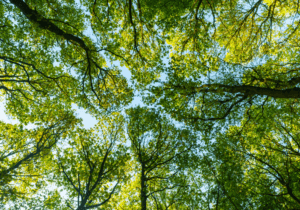Trees play a vital role in our environment, providing oxygen, shade, and beauty to our landscapes. As stewards of the natural world, it’s essential to understand the lifecycle of trees and the role that arborists play in their care and maintenance. In this comprehensive guide, we’ll delve into the lifecycle of trees under arborist care, from planting and establishment to maturity and beyond.
Planting and Establishment:
The lifecycle of a tree begins with planting, a critical stage that sets the foundation for its growth and development. Arborists carefully select suitable tree species and planting locations based on factors such as soil conditions, sunlight exposure, and climate considerations. Proper planting techniques, including proper root ball preparation, soil amendment, and watering, are essential for ensuring the tree’s successful establishment.
Early Growth and Maintenance:
During the early stages of growth, young trees require attentive care and maintenance to promote healthy development. Arborists may perform tasks such as pruning, mulching, and watering to encourage strong root growth, structural stability, and disease resistance. Regular inspections allow arborists to identify and address any issues that may arise, such as pest infestations or nutrient deficiencies, before they escalate.
Maturity and Canopy Development:

As trees mature, they undergo significant changes in their appearance and structure. Canopy development becomes a primary focus during this stage, as arborists work to maintain proper branch spacing, remove dead or diseased limbs, and promote balanced growth. Pruning techniques may vary depending on the tree species, growth habits, and desired aesthetic outcomes, with the goal of creating a healthy, structurally sound canopy.
Environmental Stress and Adaptation:
Trees are resilient organisms capable of adapting to a wide range of environmental conditions. However, they may face various stressors, such as drought, extreme temperatures, or soil compaction, that can impact their health and vitality. Arborists play a crucial role in assessing and mitigating these stressors, providing supplemental watering, soil treatments, or other interventions to support the tree’s resilience and adaptability.
Disease and Pest Management:

Throughout the tree’s lifecycle, it may encounter threats from diseases, pests, and pathogens that can compromise its health and longevity. Arborists are trained to identify common tree ailments and develop targeted management strategies to address them effectively. This may involve pruning infected branches, applying fungicides or insecticides, or implementing cultural practices to minimize the risk of future outbreaks.
Structural Support and Hazard Reduction:
As trees age, they may develop structural weaknesses or hazards that pose risks to property or safety. Arborists can assess the tree’s condition and recommend appropriate measures to address these concerns, such as cabling, bracing, or selective pruning. Structural support techniques help mitigate the risk of limb failure or tree collapse, ensuring the safety of surrounding structures and inhabitants.
Eventually, all trees reach the end of their lifecycle, either through natural senescence or as a result of environmental factors or human intervention. Arborists play a crucial role in managing the end-of-life process, whether through tree removal, repurposing, or recycling. Responsible tree care practices ensure that trees are handled ethically and sustainably, with minimal impact on the surrounding ecosystem.



